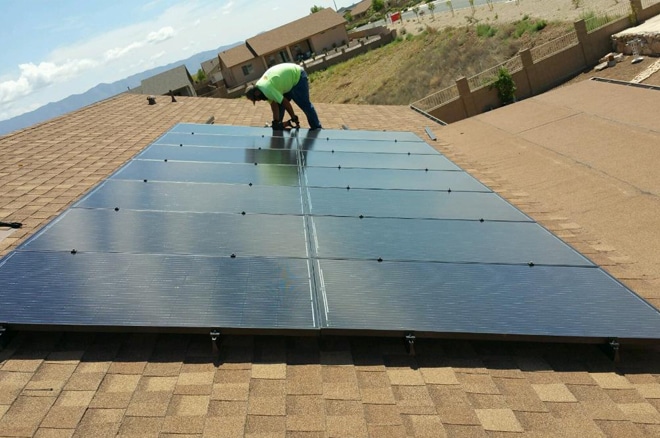Different Types of Solar Panels

Types of Solar Panels
Typically, when you see a solar panel on a roof, it is a photovoltaic (PV) panel and covered with a tempered glass enclosure to protect it from the elements.
A solar cell or PV cell (usually made from silicon) is a device that converts light directly into electricity by the photovoltaic effect. Assemblies of solar cells are used to make solar panels, solar modules, or photovoltaic arrays.
There are numerous technology choices in terms of cells, panels, and configurations, plus so many different manufacturers creating many different types of solar panels. Get professional guidance from Pur Solar before purchasing your solar electric system.
Types of PV Panels – Find the Right Fit for Your Property
Monocrystalline Silicon PV (mono-silicon or single silicon)
They are commonly used and can be applied to both residential and commercial installations, ideal for both large and smaller scale systems. These types of cells use very pure silicon and involve a complicated crystal growth process.
Long silicon rods are produced and the crystal is then cut into thin slices – individual cells that are wired together to form a panel. Monocrystaline are the most efficient type of photovoltaic cell (14-19% efficiency level), but also the most expensive due to their high silicon content and take more energy to use.
They are ideal for smaller surface areas in order to optimize roof space, because of their efficiency you don’t need as many panels.
Polycrystalline Silicon PV (multicrystalline, multi-silicon, ribbon)
Polycrystalline silicon is a commonly used type of panel for both residential and commercial installations. They are produced from silicon using an elaborate casting proves.
A large block with a bunch of irregular multi-crystal, or ‘polycrystalline’. The crystals are sliced into wafers and woven together giving them that striking blue shattered glass appearance, which is due to the anti-reflective layer which is applied to the cells, it increases their efficiency.
Due to their slightly lower levels of efficiency (13-17% efficiency level) and lower silicon levels they are less expensive. Polycrystalline PV cells are most appropriate when larger surface areas are available to lessen the cost of the installation.
